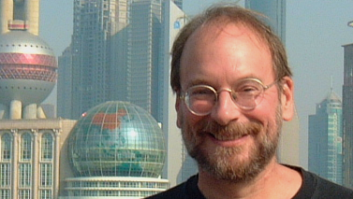
Gerry Goffin & Carole King. John Lennon & Paul McCartney. Pharrell Williams & Chad Hugo. Burt Bacharach & Hal David. Jimmy Jam & Terry Lewis. Jerry Leiber & Mike Stoller. Mick Jagger & Keith Richards. Barrett Strong & Norman Whitfield. Elton John & Bernie Taupin. Holland, Dozier, & Holland. Barry Mann & Cynthia Weil. Jimmy Page & Robert Plant…what do they all have in common?
The ampersand.
Or as Jimmy Page said, when asked to explain Led Zeppelin’s success: “We were four amazing musicians playing as a band, as opposed to one superstar surrounded by other musicians.”
WHAT IT IS, WHAT IT ISN’T
Creative collaboration and the arts go together like, well, collaboration & the arts. And now, thanks (?) to Covid, the tools for global collaboration have undergone a time-compressed evolution. Who hasn’t made a Zoom call, met with others on Teams or worked with a small group on Google Docs?
Although the history of online collaboration for musicians has been littered with casualties, ventures like Digital Musician were limited by older technology. Now that broadband is becoming the norm, collaboration-based online platforms—Splice, Avid Cloud plans, Trackd, Bandlab and many others—can take advantage of a viable telecommunications infrastructure.
Granted, there will almost certainly never be online, real-time jamming because the bandwidth issues are too daunting to avoid latency. Today’s services emphasize collaboration, and how to connect people who want to (or already do) work together.
Open Channel: MIDI Two Point…Oh!
Open Channel: Watch Your Language!
Open Channel: A Musical Legacy, Or Slip Slidin’ Away?
Nonetheless, it’s important to differentiate between “collaborating” on a project vs. “exchanging data” on a project. We’ve always had the “look and feel” of collaboration through services like Dropbox, but as artists, we need to move beyond that. Exchanging files is not like the collaboration of working together in a studio.
With that in mind, let’s look at three different platform models that add some twists to the evolution of online collaboration.
REMOTE RECORDING IN THE VIRTUAL STUDIO
Sessionwire.com positions itself as a remote audio recording platform— think of it as the return of the big studio, but “big” as in “global.” It has native applications for macOS and Windows, with high-res screen-sharing, talkback, direct file transfers, video/voice chat, email, and touches like emojis for non-verbal communication during recording. It emulates being “behind the glass,” but in the virtual studio, the “glass” is your monitor.
Both free and paid plans are available. The free plan is based on computer-to- computer drag-and-drop, while the paid plan also includes AU/AAX/VST send/receive plug-ins for connecting DAWs to the Sessionwire application.
However, an equally important component is that both free and paid users can sign up for Sessionwire’s user community. The object is to facilitate finding other collaborators and communicating with them. This isn’t like a social media-type venture, where people swap tracks—it’s more like a pool of available session musicians.
APPLICATION/COLLABORATION INTEGRATION
Taking a different approach, PreSonus Sphere is a membership-only platform for Studio One users. It’s about more than just collaboration (instructional videos, downloads for add-ons, sample libraries, user storage, etc.), but its Workspace feature has evolved from a sort of “Dropbox for Studio One’’ to a platform with collaborative features.
For example, Workspaces show up in the program’s browser, and you can transfer a mix directly from Studio One. I recently mixed an album for a SoCal singer/songwriter, and I could write on specific sections of waveforms with comments like, “I want to add a reverb splash here,” or I’d tag tracks, like, “Keep harmony well below main vocal.” If she was online, she could listen and comment on my comments in something we like to call “real time,” or she could access it later (or on a smartphone app) and make her own notes. I could then transfer a new mix that incorporated any changes.
COLLABORATION MEETS EDUCATION
MIDIable is a MIDI-based platform that hasn’t gone into general release yet, but it’s impressive. MIDI data streams are so compact that musical data can be transferred in near-real time, which is ideal for online music education. My first attempt at using it was playing a synthesizer in New Zealand from my keyboard in Nashville, while listening to the synth over the phone. The delay was surprisingly minimal.
The application’s interface includes video and chat, but perhaps more importantly, it has a virtual keyboard that shows notes as they’re played. Also, there’s no reason why a keyboard player couldn’t “broadcast” a concert over MIDIable for playback on MIDI synthesizers in the home.
COLLABORATORS WITHOUT BORDERS
I fondly remember one aspect of the ’60s, where musicians could run into each other so easily—like when I went into Record Plant for our session, and Jimi Hendrix was mixing, Tony Bongiovi was working on the flanging setup (thanks, Tony, for showing me how to do it!), and Traffic’s Chris Wood had just finished an overdub…and then when our session was done, Vanilla Fudge came in for their sessions.
These kinds of casual encounters were a highlight of working in the big studios of yesteryear. Will the world eventually become our “big studio,” where we can run into musicians anywhere, at any time…and as a result, start creating a new bunch of ampersands?





